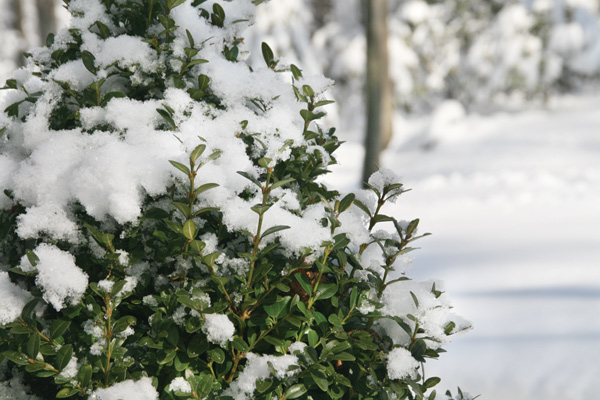Anti-desiccant can be useful, even indoors Protecting evergreens

By Barb Deliso
OSU master gardener volunteer
This is especially true because of the lasting effects of last winter.
We’ve given you lots of ideas through our articles the past few weeks about how to protect your evergreens this winter, with the No. 1 solution being the proper use of water into early winter.
Take a look back on www.vindy.com/news/valleygrows/ to get a full-complement of our advice on this topic.
One part of protecting plants we have not reviewed in detail is the option of using anti-desiccants.
We understand the use of these “waxes” is sometimes questionable, and we still need more research on the topic. But in the case of newly planted shrubs that are already showing signs of stress, we decided some action was necessary. This is because the newly planted shrubs are in my yard.
Selecting a product
In doing my research, WILT PRUF was suggested in almost every article I could find relating to my situation.
Saying that, be sure you research the issue before choosing the best product for your situation.
This anti-desiccant spray claims it is a “high-quality formula that provides the strength and protection your trees need to withstand even the harshest of winter conditions.”
This liquid comes in concentrated form that is to be mixed with water for application.
Mixing the product
For winter protection, the directions call for a 1-5 ratio, that is one part liquid plant protector to five parts warm water.
The instructions stated to shake the concentrate well before adding it to the water. Then shake the mixture well.
It is important to add the concentrate to the water, and not visa versa.
The concentrate is a waxy substance that must be added to the water to get the full effect, otherwise the concentrate will stick to the container and less will mix with the water.
Thus, improper mixing means you will apply a less than desirable amount to your shrubs.
Applying a product
The kicker is the instructions about spraying only when temperatures are above freezing.
So if you’re planning on using any of the anti-desiccants, read the label and spray only above the appropriate temperature (most labels say to spray around 40-50‚∞degrees with “no rainfall in the immediate forecast.”)
This is a requirement because you do not want the mixture to freeze on the needles/leaves.
Fast facts
When applying, spray the tops and bottoms of needles, leaves and stems.
Always spray in the morning or early afternoon to let the spray dry.
Wait until the needles are dry before application.
These products produce a waxy coating on the needles, leaves and stems and protects them from water loss.
Anti-desiccants will dry to a clear, colorless, flexible, glossy film that does not interfere with respiration, osmosis or photosynthesis of the plant.
Do not store these anti-desiccants in your sprayer. You must wash your sprayer immediately with soap and warm water to remove all of the product and liquid or it will dry and clog the sprayer.
Personal experience
With all of that, my application went well.
I was able to get the product applied before the first cold spell.
You still have time to apply when the temperature is back above 40‚∞degrees.
If you think using these anti-desiccants is too much work, continue to use good horticultural practices such as mulching 2-4 inches deep around evergreen plants for the winter and continuing to apply water when the temperature is above 40‚∞degrees and the soil is dry.
Whatever you do, be sure you are caring for newly planted evergreens and those that were adversely affected from last year’s winter.
Other uses
There are other uses for anti-desiccants that should be less stressful and just as useful to you this winter.
A wonderful use for these products is for live Christmas decorations.
Use an anti-desiccant on cut evergreens before they are brought into the house.
Mix the spray at a proportion of 1 part concentrate to 10 parts water, remembering to add the concentrate to the water (meaning the water is in the tank first).
Then use this mixture on evergreen wreaths or Christmas trees, spraying them outside.
Allow the spray to dry before bringing the items into the house.
This waxy film will slow down the moisture loss in the greens while inside your hot, dry home and slow down the problem of needle drop.
The waxy spray covers the needles, adding a glossy shine.
NOTE: Where trade names are used, no discrimination is intended and no endorsement by Ohio State University Extension is implied. Although every attempt is made to produce information that is complete, timely and accurate, the user bears responsibility of consulting the label and adhering to those directions.
To learn more about the use of anti-desiccants, go to: http://go.osu.edu/waxyspray.
 43
43

